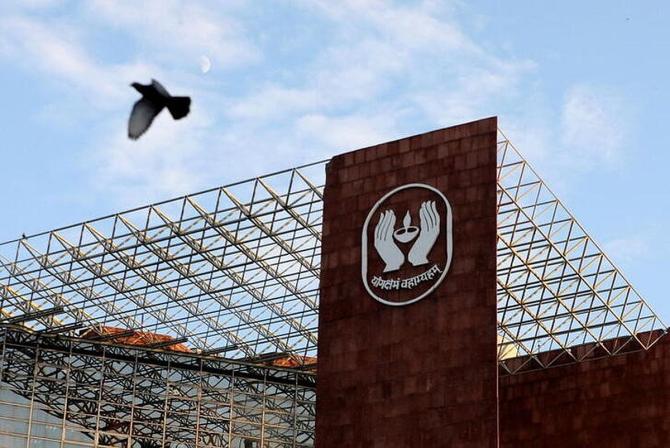Life Insurance Corp of India (LIC), which is aiming to launch its initial public offering (IPO) next month, is set to alter the pecking order of top listed companies in the country.

Depending upon where the government prices the IPO, the stock could end up becoming India’s most valuable company on the first day and even get fast-tracked into global benchmark indices given its sheer size.
According to market sources, LIC’s IPO is targeting to mop up Rs 63,000 crore and Rs 75,000 crore.
This means the insurance behemoth will be valued between Rs 12.6 trillion ($161 billion) and Rs 15 trillion ($215 billion).
If the stock is priced close to the upper estimates, its market cap will be neck and neck with Reliance Industries (RIL), currently the most valued company in the country.
While at the lower-estimates, LIC will be ranked third after RIL and Tata Consultancy Services (TCS).
LIC on Sunday filed its draft red herring prospectus (DRHP) with market regulator Sebi to sell 316.25 million shares, 5 per cent of the 6.325 billion equity shares held by the government.
Typically, the market capitalisation of an insurance company is a multiple of its embedded value, a metric that tells us the present value of future profits.
As of September 2021, LIC’s embedded value has been determined to be Rs 5.4 trillion.
The market cap to embedded value multiples for the listed private life insurance companies range between 3.2 times and 4.3 times currently.
“At a 2.6 times market cap-to-embedded value, LIC will be the second largest company, while the market cap to embedded value will need to be 3 times for LIC to become the largest company by full market cap,” says analyst Brian Freitas, who publishes on Smartkarma.
Freitas says LIC could make it to a global benchmark such as MSCI India and FTSE All-World index as early as September.
However, the insurance behemoth will have to wait to make it to the domestic benchmark Sensex and the Nifty.
As the government is divesting only 5 per cent stake, LIC’s free-float market cap will be relatively low.
Free float market cap —which is used for index computations –are those equity shares that are available for trading freely.
Shares held by promoters and those under lock-in are not part of free-float mcap.
Freitas says MSCI will use a float of 3.47 per cent for LIC after excluding shares issued to anchor investors and the shares subscribed to by employees.
As per his calculations, for an IPO to be eligible for fast entry in the MSCI India index, the requirement for full market cap is around $4.95 billion and for free float market cap at $2.47 billion.
LIC will comfortably meet both these thresholds.
For a fast-track entry into the Sensex, a company needs to rank among the top 10 in terms of free float market cap.
LIC will fall quite short here.
“Even at the IPO stake sale of 5 per cent, the free float market cap will be $8 billion and will fall well short of rank 10, which is ITC at $ 26.54 billion, as per the Freitas, who specialises in index computations.
As a result, LIC will most likely make it to the Sensex during its regular review in 2023 as it will be required to fulfil certain conditions, such as at least six months of listing.
LIC can be added to the Nifty index by September if it gets included in the futures and options (F&O) segment.
As per NSE rules, the eligibility criteria is lowered to three months from six months for a new-listed company.











